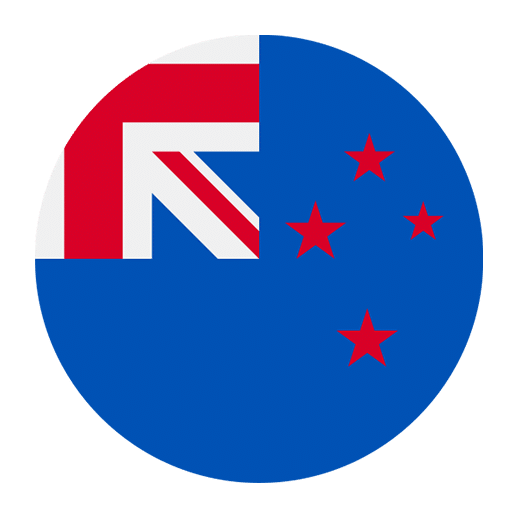Learning a language is a journey filled with excitement, challenges, and numerous opportunities to discover new ways of thinking and expressing yourself. For intermediate Māori language learners, delving deeper into the grammar of the language can significantly enhance your fluency and understanding. This article aims to provide comprehensive grammar tips for those who have already grasped the basics and are ready to take their Māori language skills to the next level.
Understanding Sentence Structure
One of the first steps in advancing your Māori language skills is mastering its unique sentence structure. Māori generally follows a Verb-Subject-Object (VSO) order, which can be quite different from the Subject-Verb-Object (SVO) order commonly used in English.
Examples:
– Kei te kai (Verb) te tangata (Subject) i te āporo (Object). – The man is eating the apple.
– I te haere (Verb) a Mere (Subject) ki te tāone (Object). – Mere went to the town.
Pay attention to this structure as you practice, and try to form sentences using this pattern to become more comfortable with it.
Verb Tenses
In Māori, verb tenses are indicated by particles that precede the verb. Here are the main particles you need to know:
Present Tense: Kei te
– Kei te oma a Hemi. – Hemi is running.
Past Tense: I
– I oma a Hemi. – Hemi ran.
Future Tense: Ka
– Ka oma a Hemi. – Hemi will run.
Continuous/Imperfect Tense: E…ana
– E oma ana a Hemi. – Hemi is running (continuously).
Negative Forms:
– For present tense: Kāore (subject) i te (verb)
– Kāore a Hemi i te oma. – Hemi is not running.
– For past tense: Kāore (subject) i (verb)
– Kāore a Hemi i oma. – Hemi did not run.
– For future tense: Kāore (subject) e (verb)
– Kāore a Hemi e oma. – Hemi will not run.
Practice using these particles with different verbs to get a feel for how they function in various tenses.
Personal Pronouns
Māori personal pronouns can be more complex than those in English because they distinguish between inclusive and exclusive forms, as well as singular, dual, and plural forms. Here’s a quick guide:
Singular:
– Au/I – I, me
– Koe – You
– Ia – He, she, it
Dual:
– Tāua – We (inclusive)
– Māua – We (exclusive)
– Kourua – You two
– Rāua – They (two)
Plural:
– Tātou – We (inclusive)
– Mātou – We (exclusive)
– Koutou – You all
– Rātou – They (plural)
Examples:
– Kei te haere tāua ki te toa. – We (you and I) are going to the store.
– Kei te haere māua ki te toa. – We (he/she and I) are going to the store.
Understanding and correctly using these pronouns can make your conversations much clearer and more precise.
Possession
Māori uses two main particles to indicate possession: “a” and “o”. These particles are used based on the relationship between the possessor and the possessed object.
A-category: Generally used for things you have control over, like your children, pets, and creations.
– Tāku – My (singular)
– Tāu – Your (singular)
– Tāna – His/Her (singular)
O-category: Generally used for things you don’t have control over, like your parents, body parts, and feelings.
– Tōku – My (singular)
– Tōu – Your (singular)
– Tōna – His/Her (singular)
Examples:
– Tāku tamaiti – My child (I have control over my child)
– Tōku matua – My parent (I don’t have control over my parent)
Practice distinguishing between “a” and “o” categories to accurately convey ownership and relationships.
Negation
Negation in Māori is typically done by using the word “kāore” before the subject, followed by the appropriate tense marker and verb.
Examples:
– Kāore au i te haere. – I am not going.
– Kāore ia i haere. – He/She did not go.
– Kāore rātou e haere. – They will not go.
Negation can also be applied to adjectives and nouns:
– Kāore ia he kaiako. – He/She is not a teacher.
– Kāore te āporo i te reka. – The apple is not sweet.
Understanding how to form negative sentences will greatly enhance your ability to communicate more complex ideas.
Questions
Forming questions in Māori often involves inverting the sentence structure or using question words. Here are some common question words:
– Aha – What
– Wai – Who
– Āhea – When
– He aha – Why
– Me pēhea – How
Examples:
– Kei te aha koe? – What are you doing?
– Ko wai tō ingoa? – What is your name?
– Āhea koe hoki mai ai? – When will you return?
For yes/no questions, you can often just state the verb at the beginning:
– Kei te haere koe? – Are you going?
Practice forming different types of questions to enhance your conversational skills.
Direct and Indirect Speech
When reporting speech, Māori often uses the word “i kī” to indicate that someone said something.
Examples:
– I kī a Hemi, “Kei te haere au.” – Hemi said, “I am going.”
– I kī te kaiako, “Me tuhituhi koutou i te mahi.” – The teacher said, “You all must write the work.”
Indirect speech often follows a similar pattern but without the quotation marks:
– I kī a Hemi kei te haere ia. – Hemi said that he is going.
– I kī te kaiako me tuhituhi mātou i te mahi. – The teacher said that we must write the work.
Understanding how to report speech can make your storytelling and reporting much more effective.
Adjectives and Intensifiers
Adjectives in Māori usually follow the noun they describe and agree in number with the noun. Intensifiers such as “tino” (very) can be used to add emphasis.
Examples:
– He whare nui – A big house
– He tangata pai – A good person
– He āporo tino reka – A very sweet apple
Practice using adjectives and intensifiers to describe objects and people more vividly.
Locative Particles
Locative particles such as “i”, “ki”, and “kei” are used to indicate location and direction.
Examples:
– Kei te kura – At the school
– Ki te toa – To the store
– I te moana – In the ocean
Understanding and using these particles correctly will help you describe where things are happening or where they are located.
Relative Clauses
Relative clauses in Māori often start with the word “nei”, “nā”, or “rā”, depending on the distance and context.
Examples:
– Te tangata nei – This person (nearby)
– Te whare nā – That house (nearby but not too close)
– Te moana rā – That ocean (distant)
Practice forming relative clauses to add more detail and context to your sentences.
Common Idioms and Expressions
Learning idiomatic expressions can make your Māori sound more natural and fluent. Here are a few common ones:
– Kei te pai – It’s okay/All good
– Tēnā koe – Hello (to one person)
– Tēnā koutou – Hello (to multiple people)
– Ka pai – Good/Well done
– Kia ora – Hi/Thank you/Be well
Incorporate these expressions into your daily conversations to become more comfortable with their usage.
Practice and Immersion
Finally, the key to mastering any language is consistent practice and immersion. Try to incorporate Māori into your daily life as much as possible. This could involve:
– Speaking with native speakers or fellow learners.
– Listening to Māori radio stations or watching Māori TV shows.
– Reading Māori books, newspapers, and online articles.
– Writing short stories, diary entries, or essays in Māori.
– Using language learning apps and online resources.
The more you immerse yourself in the language, the more natural it will become.
In conclusion, advancing your Māori language skills involves a deep understanding of its grammar, consistent practice, and a willingness to immerse yourself in the language. By mastering sentence structures, verb tenses, pronouns, possession, negation, questions, direct and indirect speech, adjectives, locative particles, relative clauses, and common idioms, you will become a more confident and fluent speaker. Keep practicing, stay curious, and enjoy the journey of learning Māori. Kia kaha (be strong) and kia manawanui (be patient) – your efforts will surely pay off!

